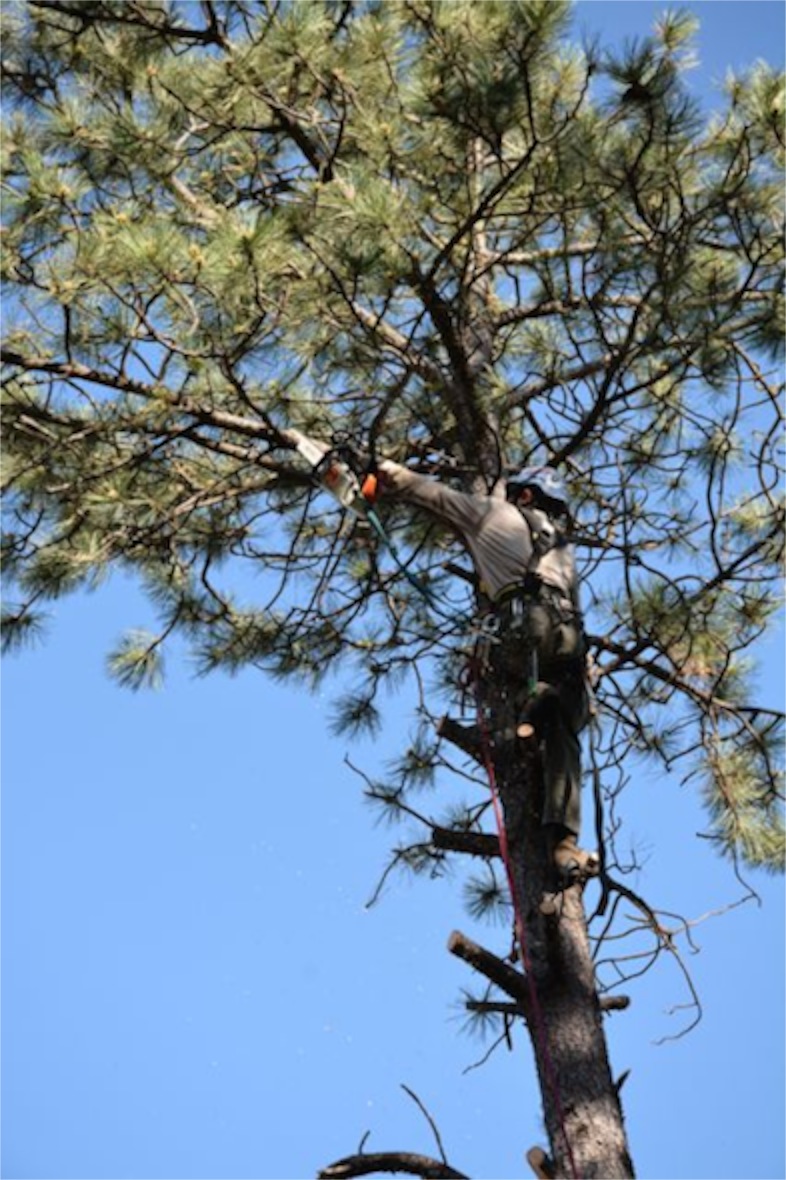Down came the tree
03/06/14 05:20

Then there are the storms. In the fall and spring especially wet snow and ice storms can break branches and bring down large and healthy trees. Last year’s October blizzard brought down a lot of trees in the hills.
Historic pictures of the hills show that the number of trees in specific places varies. There have been times when the trees have been thick and other times when there have been fewer trees in the hills.
We, however, don’t have responsibility for managing a whole forest. We have a half acre house lot. We can count the trees on our property and we notice each one. When the electric cooperative put a new line down the highway behind our house a number of years ago, we lost four trees that were in the utility right-of-way. There wasn’t anything that could be done about it. The right-of-way had been negotiated with previous owners and it was clear that the company had the right to take out the trees. We planted new trees with mixed success. The little trees in our yard have struggled with winter storms and dry spells and pressure from the deer. We have been less than attentive in our care of them. A few, however, have survived and are thriving.
This year needs to be another year of tree planting for us. The October blizzard took out the biggest tree in our yard and broke the tops out of two additional trees. Fortunately the wind direction was just right for the giant tree to fall free from our home and we had no building damage when it came down. It was a big job to get it cut up and hauled away, but it gave me something to do while we waited for the power to be restored and the snowplows to come.
It was very clear that we had to have another tree removed from our yard. It was leaning toward our house and we were sure that the right conditions could send it crashing through the roof and do a lot of damage. With the big lean on the tree, I didn’t have the skill or experience to cut it down without threatening major damage, so we turned to a professional who knew just what to do.
Yesterday was the day for the tree to come down. The entertainment value of the process was worth the cost of the tree removal. The first step was for the forester to climb the tree and attach ropes high in the tree. these provided a way for him to climb safely and go up and down quickly. Next he came down and, with a small chainsaw went back up limbing the tree as he went. He left branches to be steps for him as he climbed, but carefully cut the branches off of the tree so that they fell in a neat pile missing the house and deck and shed. It was amazing how precisely he could make the limbs fall by choosing just where to make his cuts, getting them to fall while still attached to the tree and then making a final cut to drop the branch vertically onto the pile.
The most dramatic moment came when he cut the very top out of the tree. He had attached a rope to the top that was connected through a pulley system to a place high in the tree and then the rope ran through another pulley at the base of the tree and was anchored around a nearby tree where his assistants could control the rope. The top fell, but remained high in the air. The tree swung wildly as the top came off, but the forester just rode the moving tree until it settled down and his assistants neatly lowered the top of the tree to the ground.
Down he came, chunk by chunk of tree being cut and tipped over, then lowered to the ground. The final parts of the tree could be dropped without having ropes attached.
Soon all that was left of the tree was a pile of work for me. I cut the trunk into fireplace lengths and the branches into pieces that I could handle. By the end of the evening I was tired and much of the work was finished. Now in the next couple of days I will bring a trailer and haul a load of branches to the yard waste recycling site and a load of logs to the church where they will be split and delivered as firewood to our neighbors and partners on the Cheyenne River or Pine Ridge reservation.
In the forest the fallen trees provide rich mulch for new trees as they slowly decompose. In the natural cycle fires often are a part of the process of decomposition and renewal. In our back yard, it makes sense to haul away the branches before they dry and leave mountains of pine needles. Then we need to work the soil and prepare for the planting of new trees. There is always a lot of work to do when one is responsible for a little bit of the land.
Now we can turn our attention to planting and nurturing new trees.